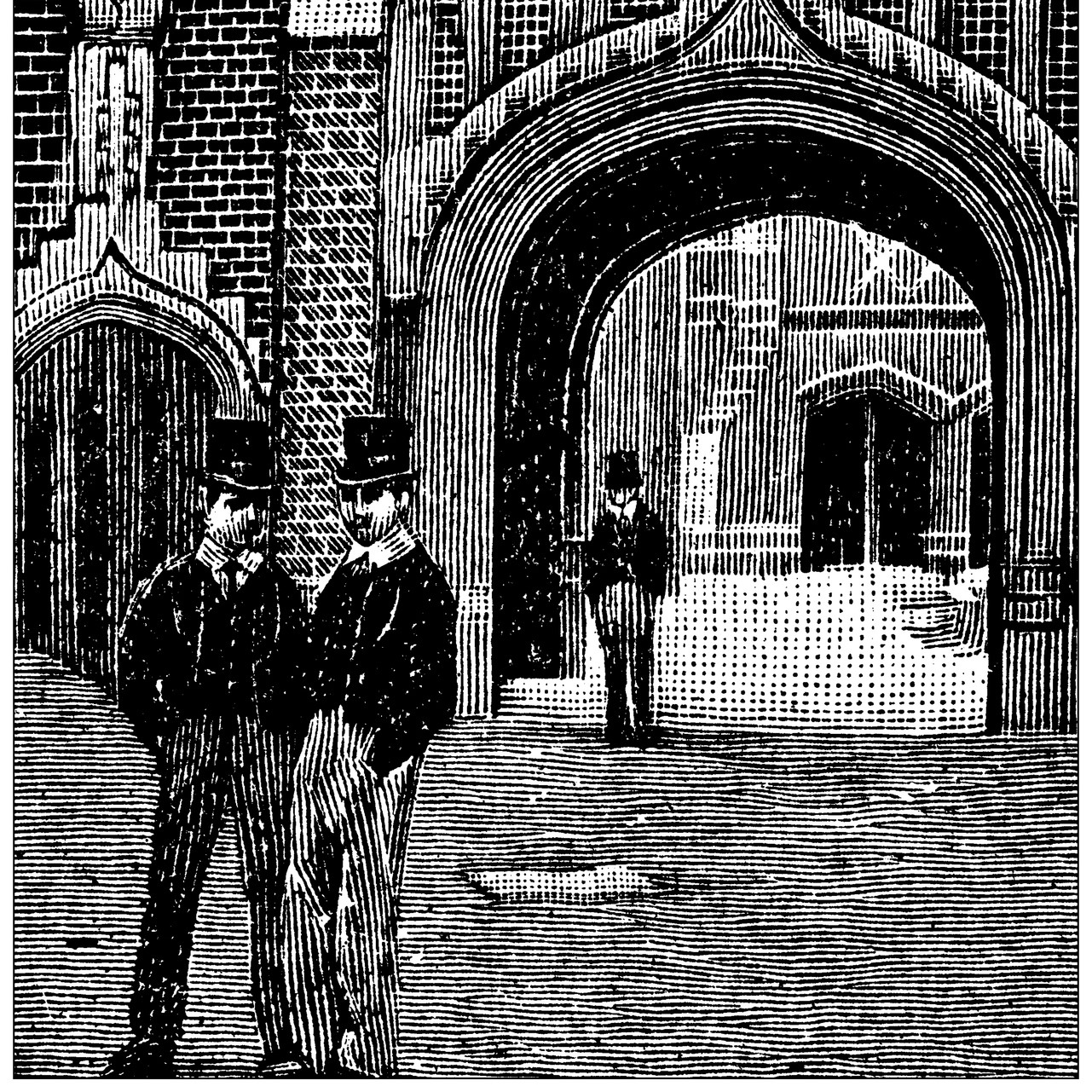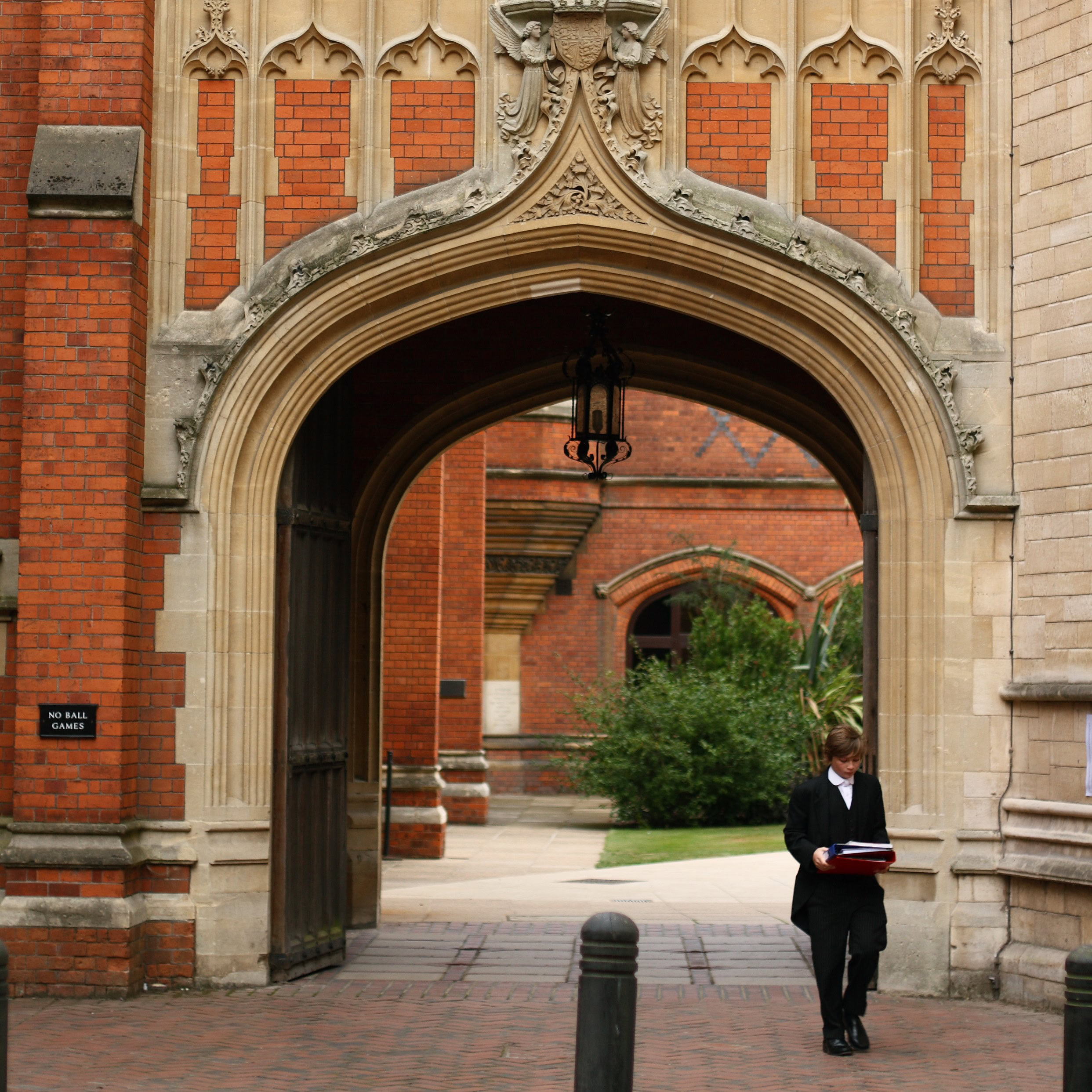What is the Eton College Uniform?
Eton College is a prestigious English boarding school with a history dating back to the fifteenth century. Its quirks and traditions have deep roots and are central to the school’s international fame and public image.
However, the Eton College uniform is not as ancient as might be thought – it was only officially mandated from the 1960s! In this piece, we’ll take a look at the history of the Eton uniform and what it consists of today. If you’re interested in the school’s history, you might also like to read our article on some of the most famous Eton alumni.
Eton College Uniform History
There is little record of what Eton boys wore before the eighteenth century, though it is very likely that there was no official uniform.
18th Century
Portraits of Etonians from the 1700s show that there was no standard school dress. Compared to the monochrome uniform of today, the boys appear to have injected plenty of colour into their clothing. Frock coats, waistcoats, and trousers were red, blue, yellow, and green – or sometimes a combination of all four!
It was fashionable in the period for members of upper-class society to wear brightly coloured clothing as it demonstrated their wealth: not only were bright dyes more expensive, but being able to keep a canary yellow coat clean showed that you were a gentleman of leisure who did not need to do messy work for a living.
It wasn’t until the early 1800s that the more sober dress that we now associate with ‘English gentlemen’ became current.

19th Century
By the first part of the 19th century, Etonians generally wore blue cloth coats and yellow waistcoats by convention. The popular myth that the modern Eton uniform was first worn in mourning for the death of King George III in 1820 is unfounded.
However, by the middle of the century, the boys themselves had agreed informal regulations which meant junior and senior boys wore different dress:
- The junior boys wore an Eton collar, black tie, and a short jacket (known as a ‘bum-freezer’)
- The senior boys wore tailcoats and white bow ties
This division is the origin of conventions that lasted down the centuries, with younger and older boys (or those in positions of authority) having different school dress.
There were still no formal dress regulations issued by the school itself. In 1861, the Eton Head Master Edward Balston told the Public Schools Commission that ‘the boys wear no particular dress’ except ‘a white neckcloth’ and a top hat. The only other thing the school authorities would insist on is that the boys not wear a brightly coloured coat – putting an official end to the eighteenth-century vogue for colour.
Study at Eton College with our summer schools
Study science, business, or leadership at Eton College on our incredible summer schools.
20th Century
The conventional uniform which had been in place since the mid-1800s continued into the early twentieth century, with a few minor tweaks. The ‘bum-freezer’ jacket, previously worn by all junior boys, was now worn only by those under 5’ 4. The top hat, required from the 1850s onwards, died out shortly after the Second World War.
The school finally introduced official dress regulations in 1964 under the new Head Master, Anthony Chevenix-Trench. These regulations form the basis of the Eton uniform to this day.

The Eton Uniform Today
The Eton College uniform is known in the school as ‘school dress’. For most boys, it consists of:
- Black trousers with white pinstripes
- White collarless shirt, with a detachable collar attached by collar studs
- The Eton tie (a thin strip of white cloth)
- Black waistcoat
- Black tailcoat
Boys buy their uniform from one of a few approved school tailors in the town of Eton.
School dress is a central part of school life for all Etonians and permeates many of their interactions – for instance, collar studs (especially front ones, used for attaching the tie) can easily go missing, and are thus a prized currency in trades among boys. If a boy cannot find his collar stud, he might try to get away with substituting it for a treasury tag.
Variations on the Standard Uniform
There are several variations on the standard school dress, depending on the place a boy occupies in the school or the type of school event he is attending.
King’s Scholars
There are 70 King’s Scholars at Eton, chosen by an entrance exam, who live in a separate boarding house from the other boys. They must wear black gowns on top of their tailcoats as a sign of their academic status.
Prefects
There are two types of prefects at Eton:
- Sixth Form Select, chosen for their strong academic performance during their time at the school.
- The Eton Society (more commonly known as ‘Pop’), elected by a mixture of teachers and the previous year’s Pop members, chosen for their leadership qualities and overall contribution to school life.
Both Pop and Sixth Form Select wear ‘stick-ups’ (winged collars, instead of the standard Eton collar) and white bow ties. House Captains and ‘Keepers’ of other aspects of school life (e.g. individual sports) also wear stick-ups and bow ties.
Sixth Form Select wear silver buttons on their black waistcoats. Pop’s waistcoats are much more noticeable – they can choose any design they like for their waistcoat and colourful patterns are common. Pop also wear spongebag trousers rather than the pinstripes of the rest of the school.
Formal Change
‘Formal change’ is commonly worn to evening meetings of clubs and societies or to events like away sports fixtures. It consists of lounge suit, shirt, and tie (or smart trousers, blazer, shirt, and tie).
Half Change
‘Half change’ is occasionally worn as an alternative to the heavy school dress in hot weather. Its use has to be approved by the Head Master. Boys can wear a blazer instead of the tailcoat and the waistcoat is optional.
Study at Eton College on Our Summer Schools
If you’re inspired to live and learn in the historical setting of Eton College, take a look at our amazing summer schools based at the school.
We offer three incredible summer schools at Eton:
These programmes are suitable for girls and boys aged 12-16. Students live in Eton accommodation, learn in the school’s classrooms and lecture theatres, and make use of its extensive grounds and facilities. There are also supervised visits to nearby Windsor – the home of Windsor Castle, one of the main residences of the British royal family – and London.
Eton Entrance Tuition
Aiming to get into Eton? Book a 1-1 13 Plus tutor to pass the Eton entrance exams.
Conclusion
The Eton College uniform is more than just a dress code – it’s a living tradition that reflects the school’s long history and distinctive culture. Though the formal regulations only date back to the 1960s, the styles worn by Etonians today have evolved over centuries of student customs and social conventions.
From the colourful frock coats of the 1700s to the distinctive tailcoats and collar studs of the modern era, Eton’s uniform is a visual symbol of the school’s identity. Whether worn by junior boys, prefects, or King’s Scholars, school dress continues to play a central role in Eton life – a tradition carefully preserved and proudly worn.
FAQs
The standard Eton College uniform, known as school dress, includes black pinstriped trousers, a white collarless shirt with a detachable stiff collar, a black waistcoat, a black tailcoat, and the Eton tie (a narrow white cloth strip).
Etonians purchase their uniform from a small number of approved school tailors based in the town of Eton. These specialist outfitters ensure the uniform meets school regulations and fits correctly.
While most boys wear the standard school dress, there are variations. For example, King’s Scholars wear black gowns, Sixth Form Select have silver buttons, and members of Pop can design their own colourful waistcoats.
Although elements of the uniform date back to the 19th century, the official Eton College dress code was only formally introduced in 1964 by Head Master Anthony Chevenix-Trench.
The formality of the Eton College uniform reflects the school’s commitment to tradition and its role in shaping the character and discipline of its students. The uniform also reinforces the sense of community and continuity across generations of Etonians.
Yes, in particularly hot weather, the Head Master may authorise half change, a lighter alternative to the full school dress. This usually involves wearing a blazer instead of a tailcoat, and the waistcoat becomes optional.


